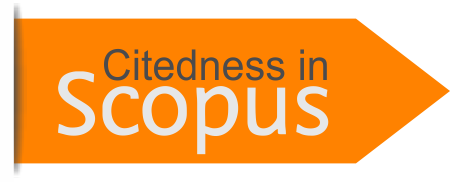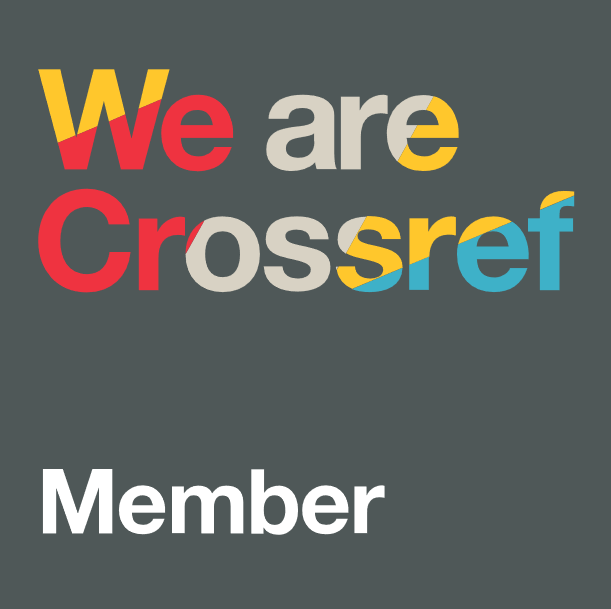Gender Differences in Mathematics Ability of Junior High School Students based on Bloom's Taxonomy
DOI:
https://doi.org/10.31629/jg.v4i1.969Keywords:
gender, bloom's taxonomy, cognitive level, mathematics abilityAbstract
Based on the merit, the uncertainty of the results, and the lack of depth of existing researches in connecting gender and cognitive level, hence, the purpose of this research is to analyze the difference of students’ mathematics ability in bloom’s taxonomy domain based on gender. This research is quantitative research with 156 students taken as sample, consisted of 81 male and 75 female students. Two-way anova employed in this study, with LSD (Least Significant Difference) and HSD (Honestly Significant Difference) as post hoc test. The results show that all assumption tests for variance analysis are fulfilled. From two-way anova test, obtained the result that Fcount > Ftable at α = 0.05 (Fcount = 10.57 dan Ftable = 2.22) which means that there is interaction between gender and students’ cognitive level. LSD test shows that at level C1, male students perform better than female groups. However, there is no difference between both groups for overall performance. HSD test also reveals that there is significant different on students’ performance in C1, C2, and C3, but not in C4, C5, and C6.
Downloads
References
Ahmad T. R., & Suthar, V. (2010). Effects of students’ beliefs on mathematics and achievement of university students: Regression analysis approach. Journal of Social Sciences, 6(2), 146–152. https://doi.org/10.3844/jssp.2010.146.152
Alfeld, P. (2012). Understanding mathematics. retrieved from http://www.math.utah.edu/~alfeld/math.html
Anderson & Krathwohl. (2003). A Taxonomy for learning, teaching, and assessing: A revision of bloom’s taxonomy of educational objectives. New York: David McKay Company, Inc.
Bahar, K. (2011). Exploring the relationship between mathematical creativity and mathematical achievement. Asia-Pacific Journal of Gifted and Talented Education, 3(1), 33–48.
Bailey, D. H., Watts, T. W., Littlefield, A. K., & Geary, D. C. (2014). State and trait effects on individual differences in children’s mathematical development. Psychological Science, 25(11), 2017–2026. https://doi.org/10.1177/0956797614547539
Cerezo R. M. T., & Casanova A. P. F. (2004). Gender differences in academic motivation of secondary school students. Electronic Journal of Research in Educational Psychology, 2(1), 97–112. Retrieved from http://www.investigacion-psicopedagogica.org/revista/articulos/3/english/Art_3_31
Cleary, T. J., & Chen, P. P. (2009). Self-regulation, motivation, and math achievement in middle school: Variations across grade level and math context. Journal of School Psychology, 47(5), 291–314. https://doi.org/10.1016/J.JSP.2009.04.002
Cuadrado, I., GarcÃa-Ael, C., & Molero, F. (2015). Gender-typing of leadership: Evaluations of real and ideal managers. Scandinavian Journal of Psychology, 56(2), 236–244. https://doi.org/10.1111/sjop.12187
Fisher, D. (2005). Emerging perspectives on learning, teaching, and technology. Georgia: Oregon State University.
Gaspersz. (1994). Metode perancangan percobaan. Bandung: Armico.
Groeneveld. (1988). Introductory statistical methods: An integrated approach using minitab. Boston: PSW-KENT Publishing Company.
Gurian. (2002). Boys and girls learn differently!: A guide for teachers and parents. San Francisco: Jossey-Bass.
Hall, C. W., & Hoff, C. (1988). Gender differences in mathematical performance. Educational Studies in Mathematics, 19(3), 395–401. https://doi.org/10.1007/BF00312455
Hannover, B., & Kessels, U. (2011). Sind jungen die neuen bildungsverlierer? empirische evidenz für geschlechterdisparitäten zuungunsten von jungen und erklärungsansätze 1dieser beitrag wurde unter der geschäftsführenden herausgeberschaft von jens möller angenommen. . Zeitschrift Für Pädagogische Psychologie, 25(2), 89–103. https://doi.org/10.1024/1010-0652/a000039
Isaac, S., & Michael, W. B. (1995). Handbook in research and evaluation: A collection of principles, methods, and strategies useful in the planning, design, and evaluation of studies in education and the behavioral sciences, 3rd ed. Handbook in research and evaluation: A collection of principles, methods, and strategies useful in the planning, design, and evaluation of studies in education and the behavioral sciences, 3rd ed. San Diego, CA, US: EdITS Publishers.
Krulik, S., Rudnick, J., & Milou, E. (2003). Teaching mathematics in middle schools: a practical guide. Boston: Pearson Education Inc.
Limbach, B., & Waugh, W. (2010). Developing higher level thinking. Journal of instructional pedagogies. Retrieved from https://aabri.com/manuscripts/09423.pdf
Lindberg, S. M., Hyde, J. S., Petersen, J. L., & Linn, M. C. (2010). New trends in gender and mathematics performance: a meta-analysis. Psychological Bulletin, 136(6), 1123–1135. https://doi.org/10.1037/a0021276
Machin, S., & Pekkarinen, T. (2008). Global sex differences in test score variability. science, 322(5906), 1331–1332. https://doi.org/10.1126/science.1162573
Mcphan, G., Morony, W., Pegg, J., Cooksey, R., & Lynch, T. (2008). Maths? Why Not? Final Report prepared for the Department of Education and Workplace Relations (DEEWR). Canberra: Department of Education, Employment and Workplace Relations.
Niederle, M., & Vesterlund, L. (2010). Explaining the Gender gap in math test scores: the role of competition. Journal of Economic Perspectives, 24(2), 129–144. https://doi.org/10.1257/jep.24.2.129
Pomerantz, E. M., Altermatt, E. R., & Saxon, J. L. (2002). Making the grade but feeling distressed: Gender differences in academic performance and internal distress. Journal of Educational Psychology, 94(2), 396–404. https://doi.org/10.1037/0022-0663.94.2.396
Pratiwi, W. D., & Kurniadi, E. (2018). Transisi kemampuan berpikir aritmatika ke kemampuan berpikir aljabar pada pembelajaran matematika. Jurnal Gantang, 3(1), 1–8. https://doi.org/10.31629/jg.v3i1.388
Sasongko. (2009). Konsep dan Teori Gender. Jakarta: Badan Koordinasi Keluarga Berencana Nasional.
Spinath, B., Freudenthaler, H., & Neubauer, A. (2010). Domain-specific school achievement in boys and girls as predicted by intelligence, personality and motivation. Personality and Individual Differences, 48, 481–486. https://doi.org/10.1016/j.paid.2009.11.028
Stanat, P., Pant, H. A., Böhme, K., & Richter, D. (2012). Kompetenzen von schülerinnen und schülern am ende der vierten jahrgangsstufe in den fächern deutsch und mathematik. ergebnisse des igb-ländervergleichs. Zusammenfassung. Berlin: Waxmann.
Stanley, N., Ellis, J., Farrelly, N., Hollinghurst, S., & Downe, S. (2015). Preventing domestic abuse for children and young people: A review of school-based interventions. Children and Youth Services Review. Stanley, Nicky: School of Social Work, University of Central Lancashire, Preston, United Kingdom, PR1 2HE, NStanley@uclan.ac.uk: Elsevier Science. https://doi.org/10.1016/j.childyouth.2015.10.018
Strand, S., Deary, I. J., & Smith, P. (2006). Sex differences in cognitive abilities test scores: A UK national picture. British Journal of Educational Psychology, 76(3), 463–480. https://doi.org/10.1348/000709905X50906
Susanti, W., Nofrianto, A., Amri, M. A., Tinggi, S., Dan, K., & Pendidikan, I. (2016). Matematika siswa melalui model pembelajaran laps- heuristic dikelas X SMAN 2. Jurnal Gantang, 1(2), 39–50.
Tannenbaum, C., Greaves, L., & Graham, I. D. (2016). Why sex and gender matter in implementation research. BMC Medical Research Methodology, 16(1), 1–9. https://doi.org/10.1186/s12874-016-0247-7
Uluç, F. Ö. (2017). How to approach teaching gender equality to boys and girls. Retrieved from https://www.britishcouncil.org/voices-magazine/how-approach-teaching-gender-equality-boys-and-girls
Walle, J., Karp, K., & Williams, J. (2010). Elementary and middle school mathematics: Teaching developmentally seventh edition. Boston: Pearson Education, Inc.
Weis, M., Heikamp, T., & Trommsdorff, G. (2013). Gender differences in school achievement: The role of self-regulation. Frontiers in Psychology, 4, 1–10. https://doi.org/10.3389/fpsyg.2013.00442


















